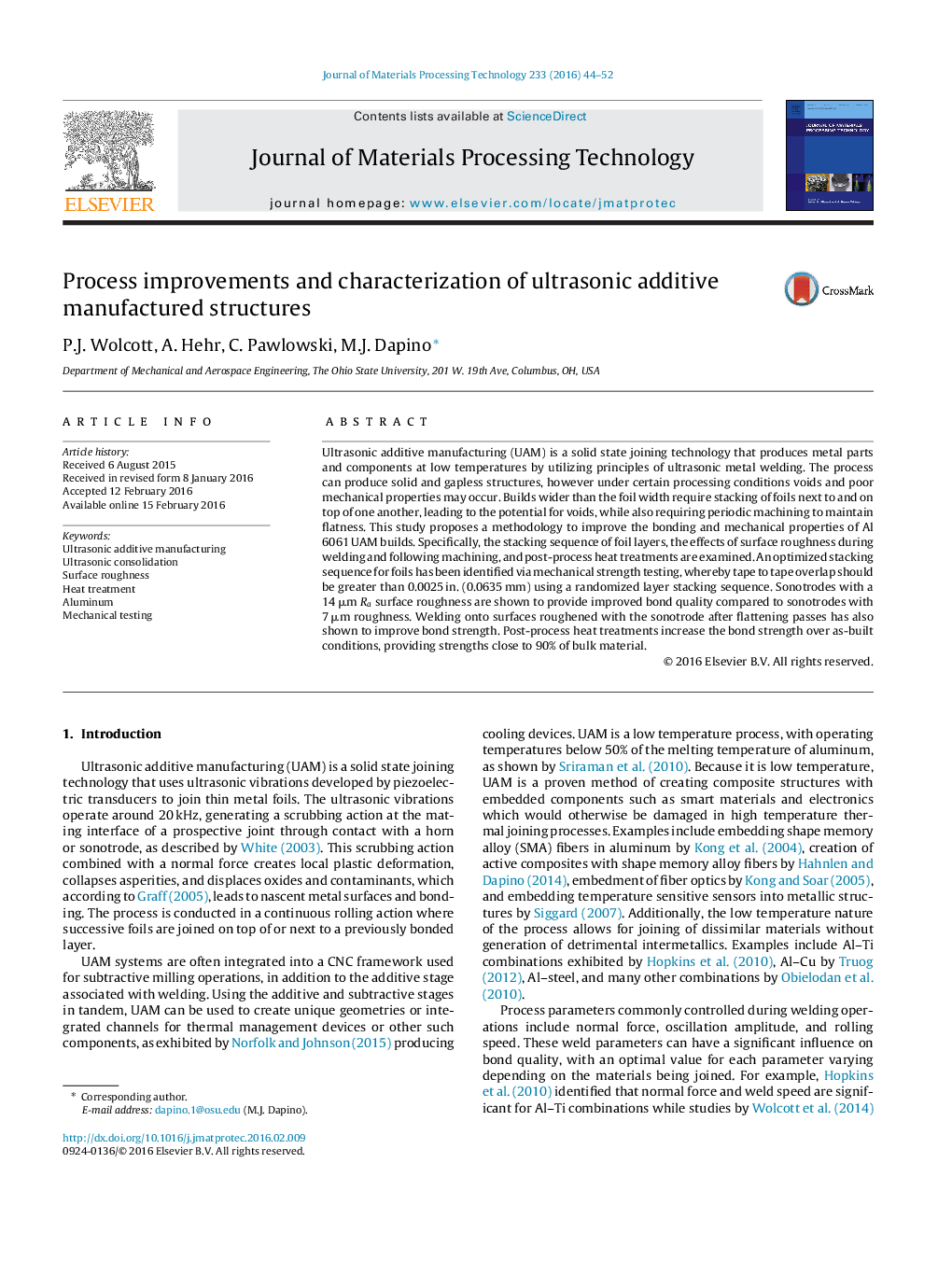| Article ID | Journal | Published Year | Pages | File Type |
|---|---|---|---|---|
| 795840 | Journal of Materials Processing Technology | 2016 | 9 Pages |
Ultrasonic additive manufacturing (UAM) is a solid state joining technology that produces metal parts and components at low temperatures by utilizing principles of ultrasonic metal welding. The process can produce solid and gapless structures, however under certain processing conditions voids and poor mechanical properties may occur. Builds wider than the foil width require stacking of foils next to and on top of one another, leading to the potential for voids, while also requiring periodic machining to maintain flatness. This study proposes a methodology to improve the bonding and mechanical properties of Al 6061 UAM builds. Specifically, the stacking sequence of foil layers, the effects of surface roughness during welding and following machining, and post-process heat treatments are examined. An optimized stacking sequence for foils has been identified via mechanical strength testing, whereby tape to tape overlap should be greater than 0.0025 in. (0.0635 mm) using a randomized layer stacking sequence. Sonotrodes with a 14 μm Ra surface roughness are shown to provide improved bond quality compared to sonotrodes with 7 μm roughness. Welding onto surfaces roughened with the sonotrode after flattening passes has also shown to improve bond strength. Post-process heat treatments increase the bond strength over as-built conditions, providing strengths close to 90% of bulk material.
